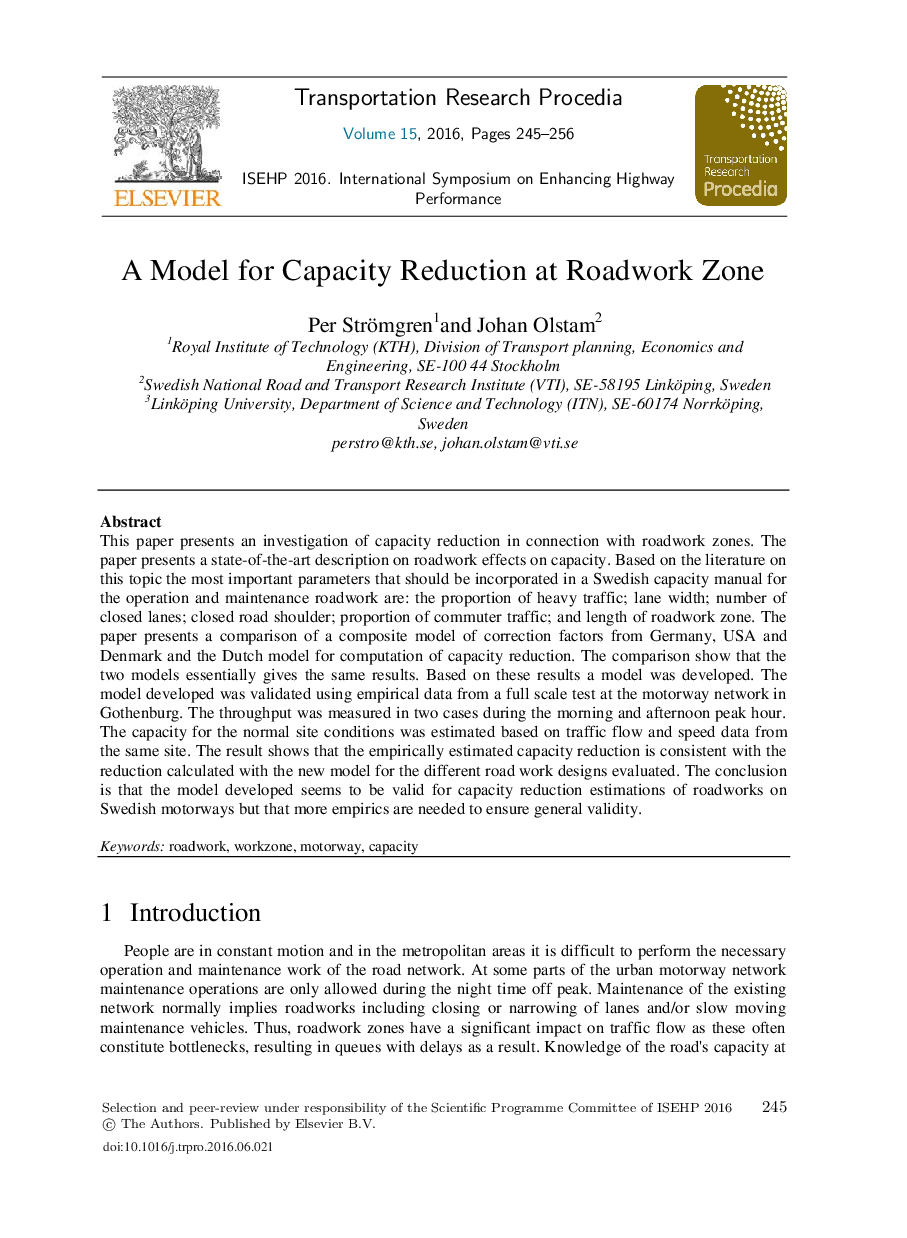| Article ID | Journal | Published Year | Pages | File Type |
|---|---|---|---|---|
| 1106112 | Transportation Research Procedia | 2016 | 12 Pages |
Abstract
This paper presents an investigation of capacity reduction in connection with roadwork. The paper presents a state-of-the-art description on roadwork effects on capacity. The state-of-the art has been used to develop a model for estimation of capacity reduction at roadwork zone on Swedish roads. The model has partly been validated with empirical data from a full scale test at the freeway network in Gothenburg. The studies presented in the literature shows that capacity differs not only between different roadwork designs but also between roadwork with similar design. Thus, one can conclude that there is a high variation between the roadwork zone due to effects of surrounding elements, such as the type of work and external effects such as rain (which affects the capacity even under normal conditions). The differences that exist in the estimation of capacity for motorway sections next to a roadwork zone can be said to consist of four situation-specific variables. These four variables are: the percentage of heavy vehicles, type of road, the width of the remaining lanes and diversion of traffic to the opposite carriageway. An increasing proportion of heavy vehicles have a negative impact on roadwork zone capacity. An increasing complexity of work, from light barrier works to extensive bridge repair, has a negative impact on performance. An increased lane width has a positive effect on capacity. The diversion of traffic to the opposite carriageway is often the cause of the bottleneck and therefore has a significance effect on capacity. The conclusion from the literature review is that the most important parameters that should be incorporated in a Swedish capacity manual for the operation and maintenance of roadwork are: the proportion of heavy traffic, lane width, type of roadwork, number of closed lanes, closed road shoulder, proportion of commuter traffic and length of roadwork zone. In general, there have been (too) few empirical studies focusing on the differences in capacity caused by these situation-specific variables. The paper presents a comparison between the Dutch model for computation of capacity reduction and a composite model of reduction factors from Germany, USA and Denmark. The comparison show that the two models essentially gives the same results. Based on these results a new model was developed. In the developed model, the capacity for the remaining lane is calculated. The paper presents results from a field study in Gothenburg where throughput was measured in three cases during a morning hour and one afternoon hour. The capacity was calculated from the normal site conditions according to historical traffic flow and speed data. The result shows that the empirically estimated confidence interval of capacity reduction is consistent with the reduction calculated with the new model for the different cases. The conclusion is that the model can be used to calculate capacity reductions for different roadwork zone configurations but that validation for more configurations is desirable.
Related Topics
Social Sciences and Humanities
Social Sciences
Safety Research
Authors
Per Strömgren, Johan Olstam,
